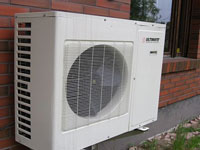Program Evaluation
Energy efficiency program evaluation is an important aspect of the overall energy efficiency planning cycle. EES Consulting can conduct both process and impact evaluations of utility energy efficiency programs. EES Consulting uses several tools for program evaluation including statistical analysis, data management, PROCOST modeling, secondary research, and economic modeling. The PROCOST model was developed by the Northwest Power and Conservation Council for modeling energy efficiency measures costs and savings. EES offers services to its clients using the PROCOST tool for program evaluation or other studies including conservation potential assessments.
Snohomish County PUD

EES Consulting provided a evaluation of the effectiveness of the Snohomish CFL program. This program evaluation included both retailer on-site interviews and telephone surveys. In addition, retailer store audits were conducted. Part of the focus was to determine the reasons for the significant increase in sales over previous years. The results indicated that there was a significant increase in sales to commercial building customers, apartment complex and retirement home managers, homeowners replacing bulbs in their entire home, and homeowners purchasing bulbs for later use.
Refrigerator/Freezer Decommissioning Program
EES completed an annual impact evaluation for the refrigerator/freezer decommissioning program. The evaluations included research and review of 3rd party studies and database/spreadsheet analysis of the recycled units. The evaluations accounted for free-ridership (net-to-gross ratios) and utilized PROCOST for calculating the benefit-cost ratios and levelized costs.
Weatherization Program Evaluation

A weatherization program evaluation included analysis of windows and insulation measures (ceiling, wall, and floor). This evaluation included in-depth analysis of the weatherization measures included in the Snohomish PUD Residential Loan Program. Parameters examined included costs, savings, and measure life. Internal PUD costs and savings were compared against regional data from the RTF and BPA. Revised cost-effectiveness tests were developed using PROCOST, and utility-specific avoided costs and other financial parameters (e.g., discount rate).
Behavioral Program Impact Evaluation
Snohomish County PUD implemented a behavioral conservation program in 2009 with over 800 residential participants. The program encouraged customers to change their behavior to lower their energy consumption. Participants “pledged” to conserve energy. The Snohomish PUD asked EES to determine if there were statistically significant energy savings resulting from the program. Participants in the behavioral program and a control group with similar characteristics were compared. The evaluation utilized statistical analysis to determine whether or not program savings were significant. Several factors were controlled for including various pledge dates across participants, home heating fuel, weather, location, home type, and month variables. The results and conclusions helped program managers with decisions regarding program implementation and structure.
Heat Pump Program Evaluation

A heat pump program evaluation consisted of an impact evaluation with in-depth analysis of heat pumps (conversions and upgrades) measures. The data analyzed included costs, savings, and measure life. Internal PUD costs and savings were compared against regional data from the RTF and BPA. Revised cost-effectiveness tests were developed using PROCOST, and utility-specific avoided costs and other financial parameters (e.g., discount rate).
